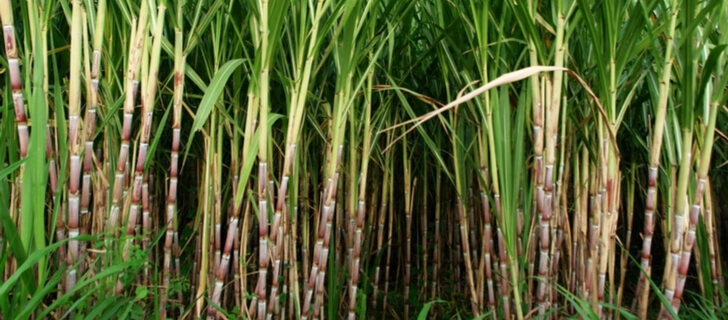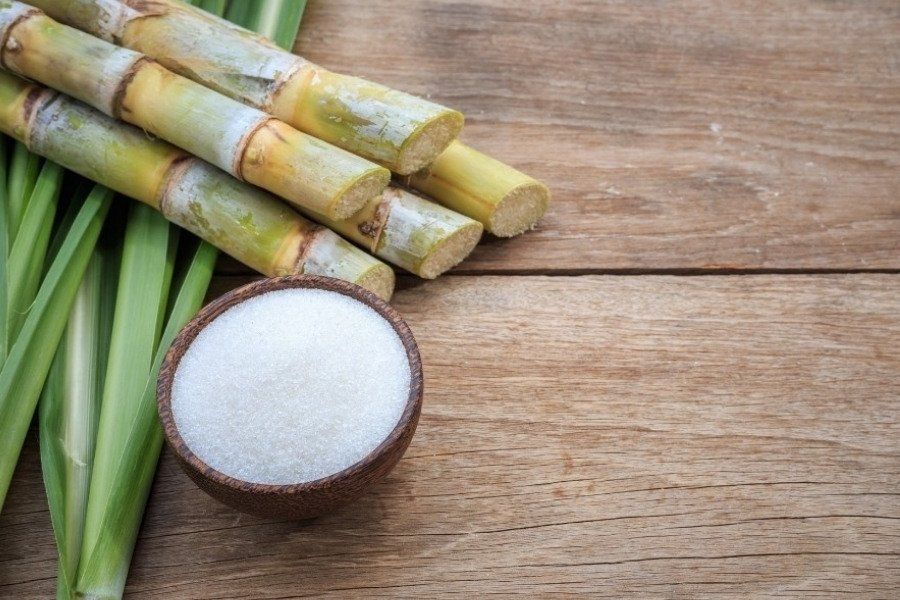What Are Sugar Canes Used For in Traditional Remedies and Folk Medicine
All Concerning Sugar Canes: What Are Sugar Canes Used For and Their Role in International Agriculture?
Sugar canes act as a keystone of global agriculture, largely identified for their role in sugar manufacturing. They also add to the development of spin-offs like molasses and ethanol. These elements not only sustain different markets yet additionally effect financial stability in country areas. The cultivation of sugar walking canes faces considerable ecological challenges. Comprehending their multifaceted duty triggers further expedition into their agricultural methods and sustainability initiatives.
The Agricultural Refine of Sugar Walking Cane Growing
Although sugar cane cultivation may differ by area, the essential farming process continues to be constant. The very first step entails selecting high-yielding varieties suitable for local environments. Preparation of the soil is vital, usually calling for tillage and the enhancement of plant foods to boost fertility. Planting usually takes place throughout the rainy season, with farmers making use of either whole stalks or cuttings to develop new crops.As the plants grow, they require attentive care, consisting of weed control, pest monitoring, and irrigation, depending upon the environmental problems. Farmers monitor the sugar cane's development cycle, which typically covers 10 to 24 months, before harvesting. Gathering is labor-intensive, commonly conducted by hand or with specialized machinery, making certain minimal damage to the stalks. Complying with harvest, the walking stick is carried to refining centers. This meticulous farming procedure not only sustains neighborhood economic situations yet additionally plays a substantial function in worldwide farming techniques, contributing to food and power materials.
Sugar Production: From Cane to Crystal
The journey of sugar production begins the moment fresh harvested sugar cane arrives at processing facilities. The primary step entails chopping the walking cane and washing to prepare it for removal. Using high-pressure rollers, the juice is removed from the smashed cane, causing a pleasant liquid called sugarcane juice. This juice undertakes explanation, where contaminations are removed with the addition of lime and heat.Next, the cleared up juice is focused by steaming it down to develop a thick syrup. This syrup is after that crystallized by cooling down, making it possible for sugar crystals to create. The crystallized sugar is divided from the continuing to be syrup, referred to as molasses, with centrifugation.Finally, the sugar crystals are washed and dried out, resulting in the acquainted granulated sugar (What Are Sugar Canes Used For). This process changes raw sugar walking stick right into a product that is important to numerous culinary and commercial applications, highlighting the relevance of sugar in global farming
Biofuels and Sugar Canes: A Lasting Future
As the globe increasingly seeks sustainable power remedies, sugar walking sticks have actually become a promising resource for biofuels. The biomass derived from sugar walking canes can be exchanged ethanol, a renewable fuel option that considerably minimizes greenhouse gas exhausts contrasted to fossil gas. This process not just offers a cleaner power resource however additionally promotes power freedom for many countries.In enhancement, sugar walking cane cultivation sustains country economies by producing tasks in both farming and biofuel production fields. Making use of sugar canes for biofuel manufacturing likewise motivates farming diversity, which can enhance soil health and wellness and decrease reliance on single plants. The byproducts of sugar cane handling can be made use of for electricity generation, additionally adding to a lasting energy cycle. As nations venture to fulfill eco-friendly energy targets, sugar canes are positioned to play a necessary role fit a more sustainable future in the biofuel landscape.

The Duty of Sugar Canes in Beverage Manufacturing
Sugar walking canes play a considerable function in drink production, working as a primary active ingredient in rum and contributing to the sweet taste of many sodas. In addition, their all-natural juices are used in various beverages, boosting taste and allure. This convenience emphasizes the value of sugar walking sticks in the global drink sector.
Sugar Walking Cane in Rum
Rum manufacturing is elaborately linked to the farming of sugar cane, a vital crop that gives the needed fermentable sugars required for fermentation. This process begins with the extraction of juice from harvested sugar walking sticks, which is after that either fermented straight or processed into molasses. Yeast is contributed to transform the sugars into alcohol, causing a diverse array of rum styles, from light to dark varieties. The geographical region where the sugar walking stick is expanded considerably affects the flavor profile of the rum, with factors such as soil kind and environment having fun crucial roles. Countries like Barbados, Jamaica, and Cuba are renowned for their rum production, reflecting the historical and social relevance of sugar walking stick within the international beverage industry.
Soft Drinks Sugar Resource
All-natural Juice Manufacturing Utilizes
Along with its considerable duty in soft drink manufacturing, sugar walking stick is likewise critical in the all-natural juice market. The juice extracted from sugar walking cane, called walking stick juice, is commemorated for its natural sweet taste and special flavor account. This juice is commonly consumed fresh in various regions, particularly in exotic countries, where it is appreciated as a renewing beverage. Additionally, walking stick juice works as a base ingredient in a series of natural fruit juices and healthy smoothies, improving both taste and nutritional worth. Its natural homes make it an appealing choice to artificial sweeteners, interesting health-conscious consumers. In general, sugar walking cane's flexibility in juice production underscores its relevance in contemporary beverage offerings worldwide.
Advancements in Sugar Walking Stick Byproducts
Technologies in sugar walking cane byproducts are paving the method for sustainable solutions in numerous industries. Biofuels derived from sugar walking cane provide an alternative energy Website resource, while advancements in sustainable packaging are reducing advice dependence on traditional products. These growths highlight the flexibility and potential of sugar walking stick beyond its key use in beverage production.
Biofuels From Sugar Cane
Just how can the results of sugar cane add to sustainable power remedies? The conversion of sugar walking stick into biofuels presents a promising opportunity for renewable resource. By making use of the fibrous deposit, called bagasse, manufacturers can produce bioethanol with fermentation processes. This bioethanol can work as a sustainable alternative to nonrenewable fuel sources, minimizing greenhouse gas exhausts and reliance on non-renewable resources. Additionally, molasses, another byproduct, can be fermented to create biofuels, making best use of source efficiency. The power created from sugar cane not only offers a cleaner gas resource however also boosts the general economic practicality of sugar manufacturing. By incorporating biofuel manufacturing into their operations, sugar cane sectors can play a vital duty beforehand lasting power solutions worldwide.
Sustainable Packaging Solutions
Sustainable product packaging remedies are significantly being developed from sugar walking cane results, showcasing the flexibility of this farming staple. Advancements such as naturally degradable plastics stemmed from bagasse, the fibrous deposit left after juice extraction, are gaining traction. These materials provide an eco-friendly alternative to traditional plastics, decreasing dependence on nonrenewable fuel sources and decreasing carbon impacts. Furthermore, sugar cane-based packaging is compostable, breaking down normally without damaging the environment. Firms are currently checking out these options to align with consumer need for sustainability. As awareness of plastic contamination expands, the adoption of sugar cane-derived packaging is expected to rise, positioning sugar walking sticks as an essential player in the shift to greener packaging remedies in different industries.
Economic Influence of Sugar Cane Farming

Although sugar walking stick farming has deep roots in numerous economic situations, its financial impact expands far past agricultural production. This plant serves as a considerable source of income for numerous farmers worldwide, especially in creating countries where agriculture is a primary source of income. Sugar walking stick adds to neighborhood economic situations via job production in handling, growing, and harvesting. The market likewise stimulates development in associated fields such as transportation, devices production, and food processing.Furthermore, sugar walking cane is a principal in worldwide trade, affecting worldwide markets and costs. Countries that generate sugar walking stick frequently count on exports to boost their financial security. The byproducts of sugar walking cane, such as ethanol and molasses, branch out income streams for farmers and include value to the agricultural sector. Overall, the economic ramifications of sugar cane farming are extensive, affecting not only farmers yet also entire communities and nationwide economies.
Environmental Considerations in Sugar Walking Stick Cultivation
While sugar walking stick farming plays a crucial role in several economic situations, it additionally increases significant environmental concerns that can not be ignored. The substantial use plant foods and pesticides in sugar walking stick farming commonly results in soil deterioration and water contamination. Drainage from read these chemicals can infect close-by water bodies, hurting marine environments. Furthermore, the monoculture methods prevalent in sugar walking cane farming decrease biodiversity, making communities extra prone to parasites and diseases.Deforestation is an additional essential problem, as land is commonly gotten rid of to give way for sugar plantations, bring about habitat loss for wild animals and enhanced carbon emissions. The high water usage required for sugar walking cane irrigation can strain regional water resources, particularly in dry areas. As global need for sugar remains to climb, resolving these environmental challenges ends up being necessary to assure sustainable practices in sugar walking stick growing.
Regularly Asked Concerns
What Are the Nutritional Conveniences of Sugar Walking Stick?
The dietary benefits of sugar walking stick primarily include its high carb web content, giving energy. Furthermore, it has vitamins, minerals, and antioxidants that may sustain total health, though moderation is vital as a result of its sugar content.
How Does Sugar Walking Cane Affect Local Ecosystems?
Sugar walking cane cultivation can considerably impact regional ecological communities by altering land use, affecting biodiversity, and requiring considerable water resources. In addition, it might cause dirt destruction and chemical drainage, interrupting bordering habitats and wild animals populations.
What Is the Background of Sugar Cane Farming?

Are There Alternatives to Sugar Walking Stick for Sugar Manufacturing?
Alternatives to sugar walking cane for sugar production consist of sugar beets, corn, and different tropical plants like sorghum and agave (What Are Sugar Canes Used For). These crops supply varied resources of sweetness, each with distinct farming needs and ecological influences
Exactly How Do Weather Condition Patterns Impact Sugar Walking Cane Returns?
Weather condition patterns significantly affect sugar cane yields with temperature variations, rains amounts, and seasonal cycles. Drought or too much rains can hinder growth, while suitable conditions boost photosynthesis, inevitably influencing the amount and high quality of the harvest. The trip of sugar production begins the minute newly harvested sugar cane shows up at processing facilities. The taken shape sugar is separated from the remaining syrup, understood as molasses, via centrifugation.Finally, the sugar crystals are washed and dried out, resulting in the acquainted granulated sugar. Rum manufacturing is elaborately connected to the farming of sugar walking stick, a necessary crop that gives the necessary fermentable sugars needed for fermentation. Furthermore, the monoculture methods widespread in sugar cane farming minimize biodiversity, making communities much more susceptible to parasites and diseases.Deforestation is an additional essential problem, as land is commonly removed to make means for sugar vineyards, leading to habitat loss for wild animals and raised carbon exhausts. Alternatives to sugar walking stick for sugar manufacturing include sugar beets, corn, and numerous tropical plants like sorghum and agave.